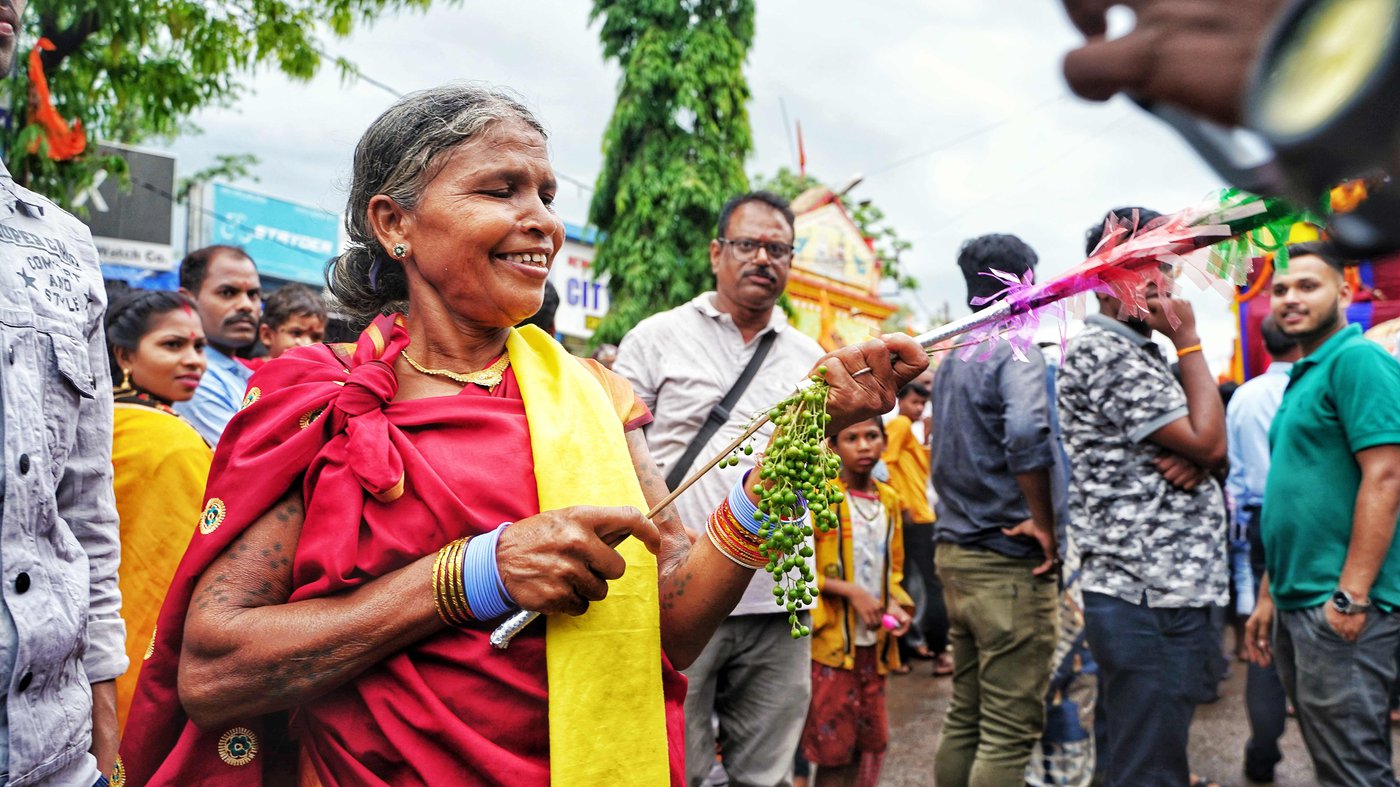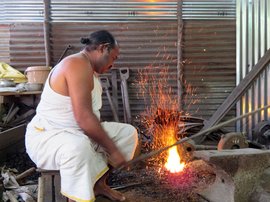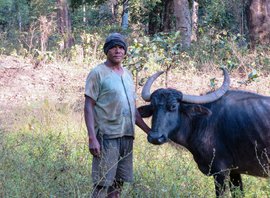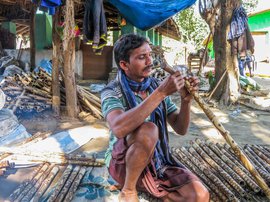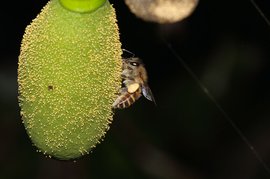Phhaaat!
That’s the sound of the peng fruit bullet fired from a tupki. Together they make up the celebratory guard of honour at the Goncha festival held in Jagdalpur town in Chhattisgarh.
The tupki is a ‘gun’ made with a barrel of bamboo that uses the peng – a wild fruit, as pellets. The ‘guns’ are fired as a salute at the popular festival around Lord Jagannath’s rath (chariot). Held in July, the festival attracts thousands of people from the Bastar region of the state.
“People come from nearby villages for the Goncha festival and definitely buy a tupki ,” says Vanmali Panigrahi, a resident of Jagdalpur who cannot remember a time when the tupki was not used in the parade.
The bullet, peng, is a small, round greenish-yellow fruit that grows in clusters on malkangini – a tall creeper ( Celastrus paniculatus willd) found in the forests nearby.
The Goncha festival is also celebrated in Puri but the tradition of offering a salute with a
tupki
and
peng
is unique to the Bastar region. This bamboo ‘gun’ was once used to drive away wild animals in the forests.
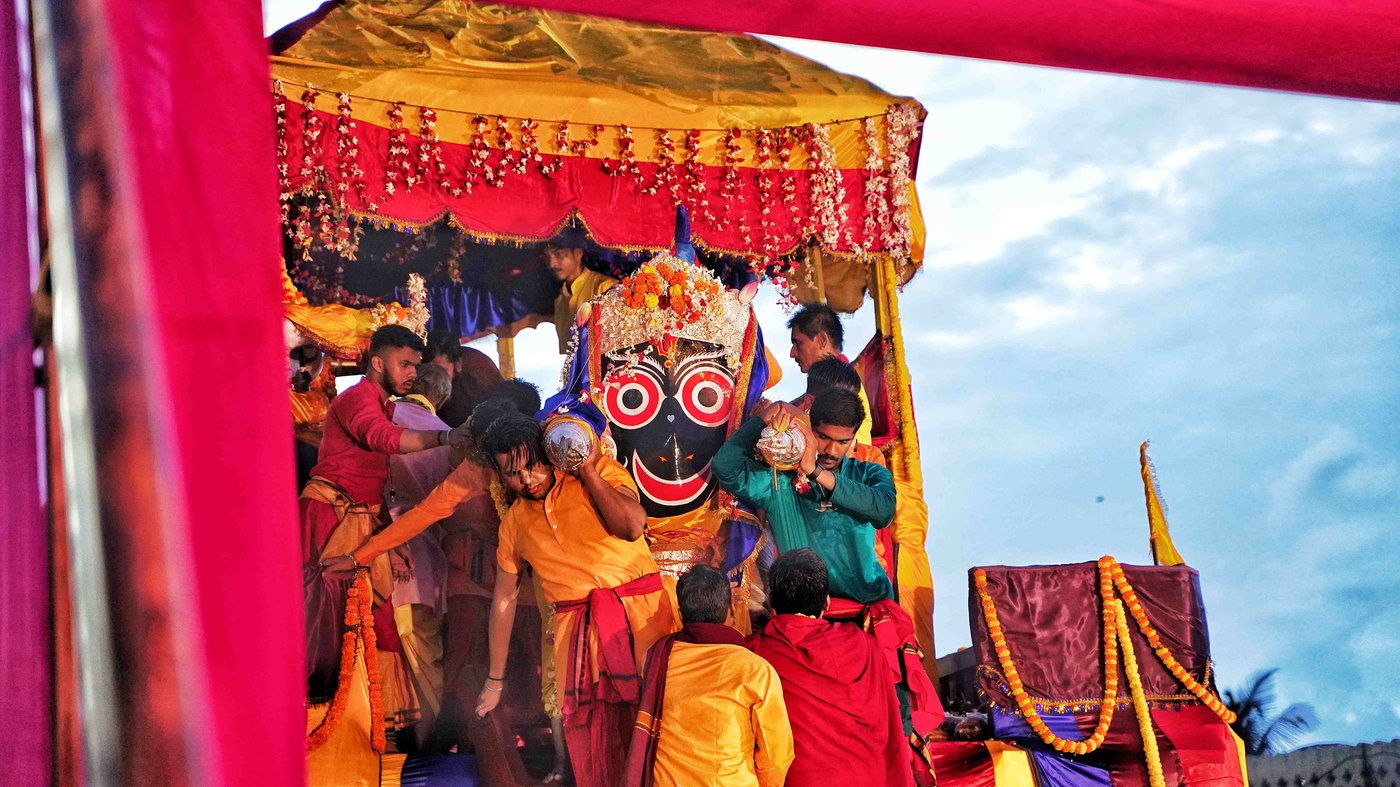
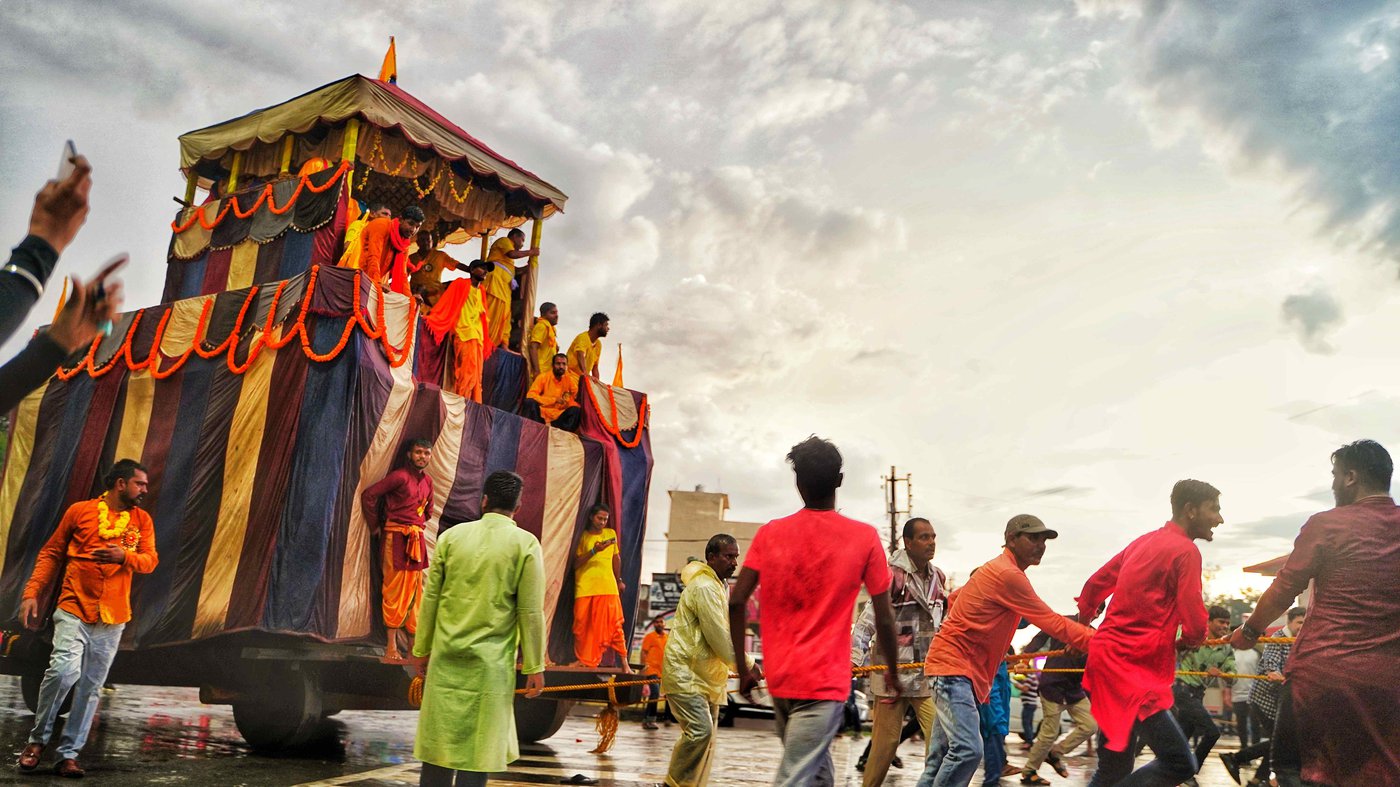
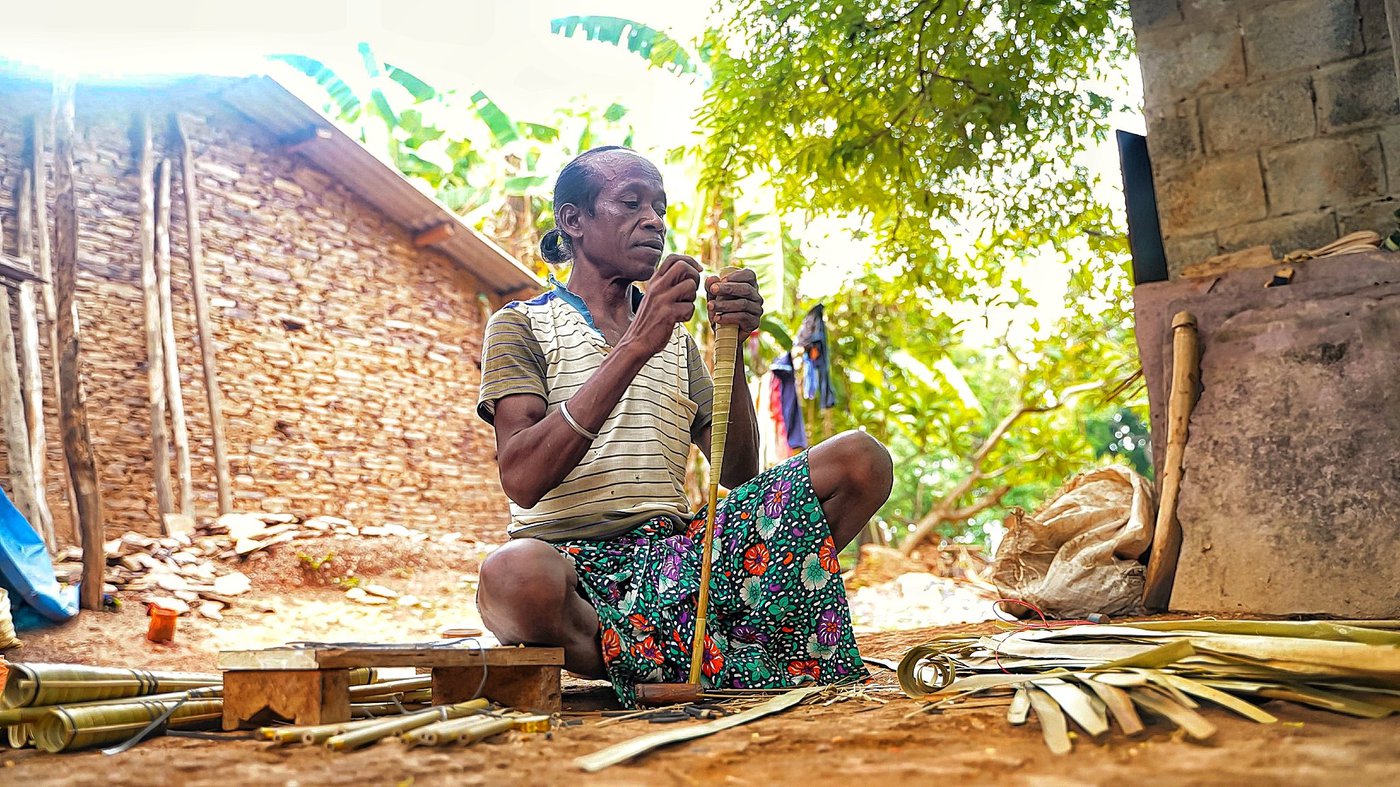
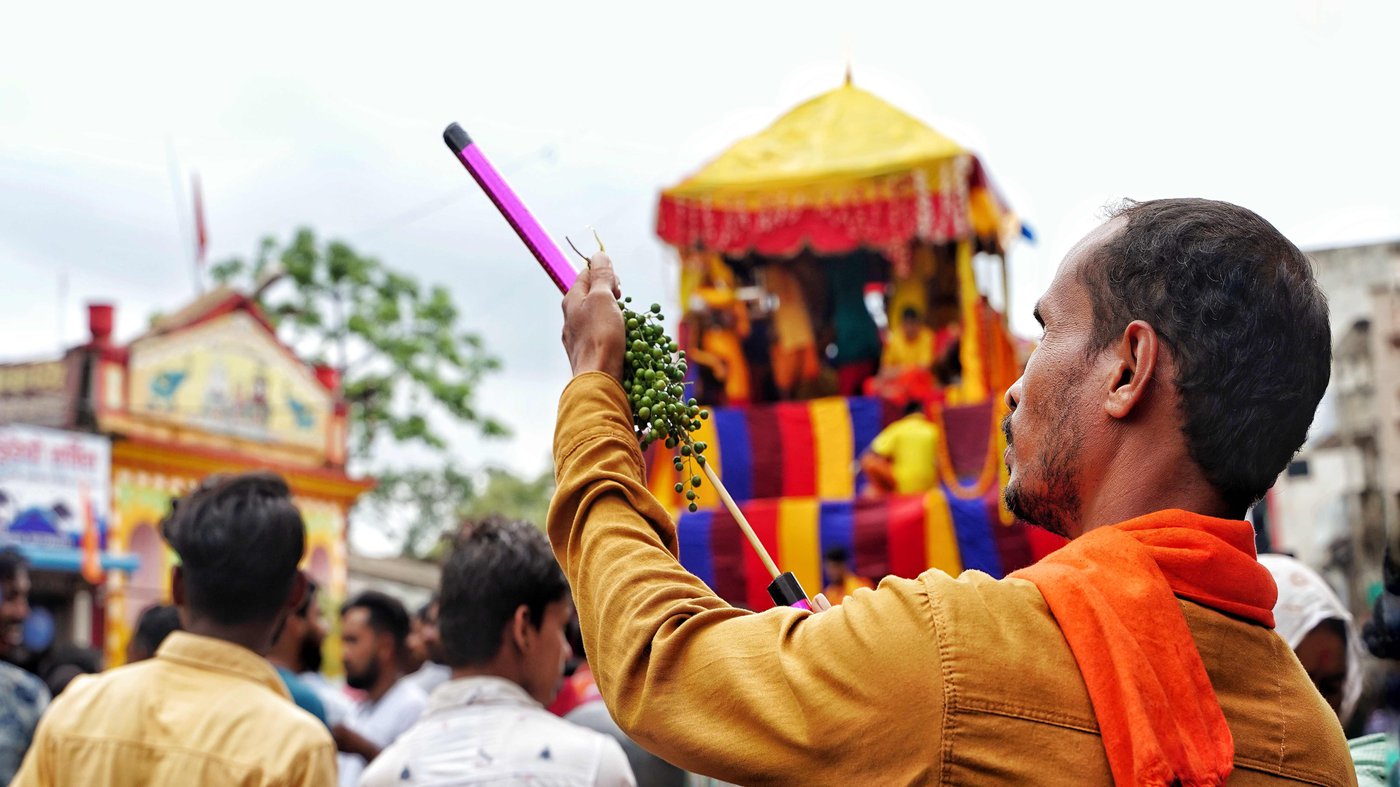
Top left: Lord Jagannath being brought down from the rath by priests of the temple in Jagdalpur, Chhattisgarh. Top right: Devotees swarm around the rath . Bottom left: Sonsaay Baghel wrapping palm leaves around the hollow bamboo to decorate a tupki . Bottom right: Armed with a tupki and a peng , a devotee gets ready to fire!
Sonsaay Baghel is a farmer and bamboo craftsman in his 40s who lives in Jamawada village. A Dhurwa Adivasi, he works with his wife to craft the
tupkis
from June, a few weeks before the festival held in July. “Every year before the festival we start making
tupkis
. We collect bamboo [in advance] from the forest and dry it,” he says.
The tupki ‘gun’ is made by hollowing out a length of bamboo stem using an axe and knife as tools. A variety of colourful leaves and papers are then used to decorate the tupki .
“We bring peng from the jungles when it is ripe. The fruit is available after March and sold at 10 rupees for a bunch of roughly 100 fruits,” says Sonsaay and adds, “This is a medicinal fruit. Its oil is said to be effective for arthritic and joint pains." It also makes the perfect bullet.
Making and selling tupkis is an annual source of income for many in the region and tupki makers sprout in every village at the time of the festival. A single tupki sells for Rs. 35-40, and Baghel travels to the town of Jagdalpur – 12 kilometres from his home – to sell them. He says three decades ago a tupki sold for two rupees.
Baghel cultivates rain-fed paddy on his four acres of land here in Jagdalpur block of Bastar district. Of the 780 households in his village Jamawada, 87 per cent belong to the Dhurwa and Maria Adivasi communities (Census 2011).
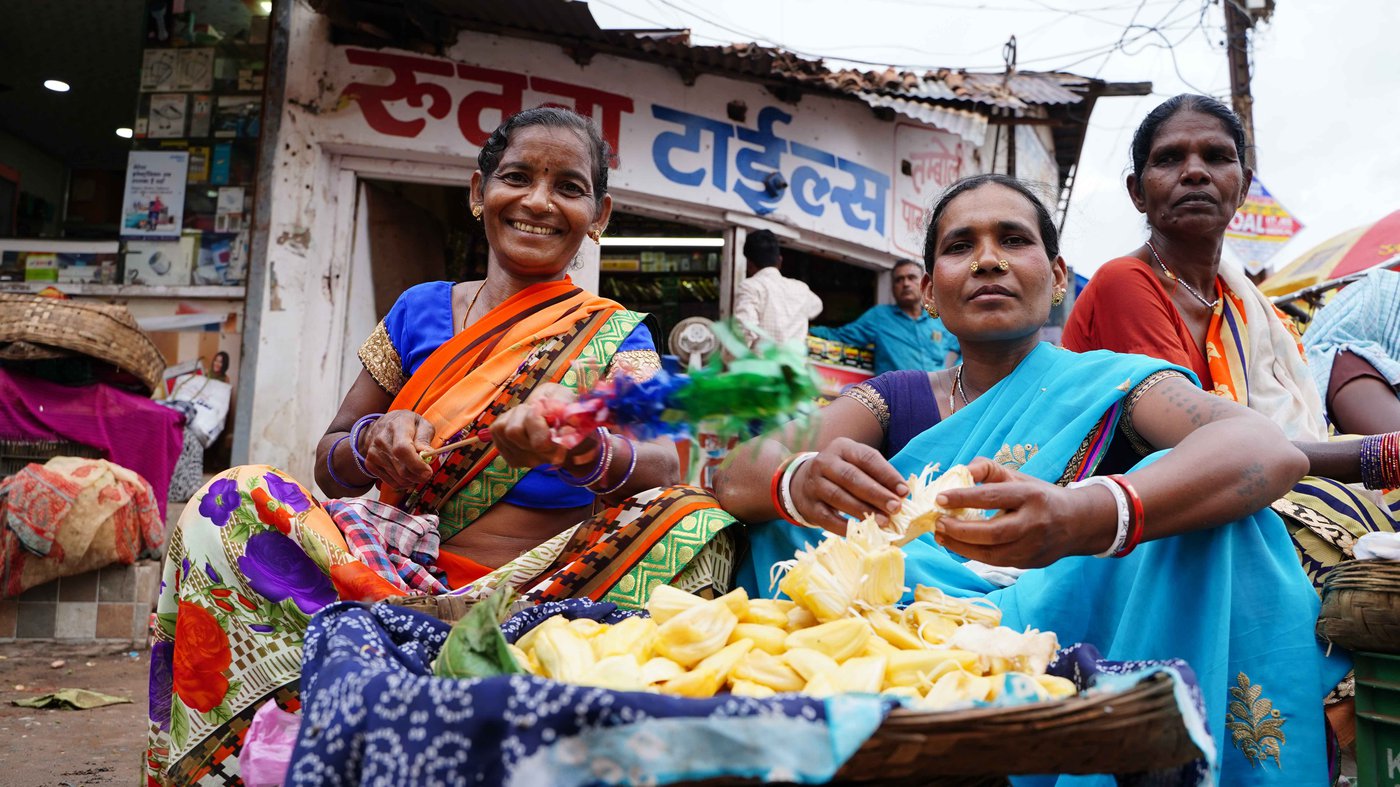
Women selling panas kua (ripe jackfruit) at the Goncha festival. It’s a popular offering to Lord Jagannath
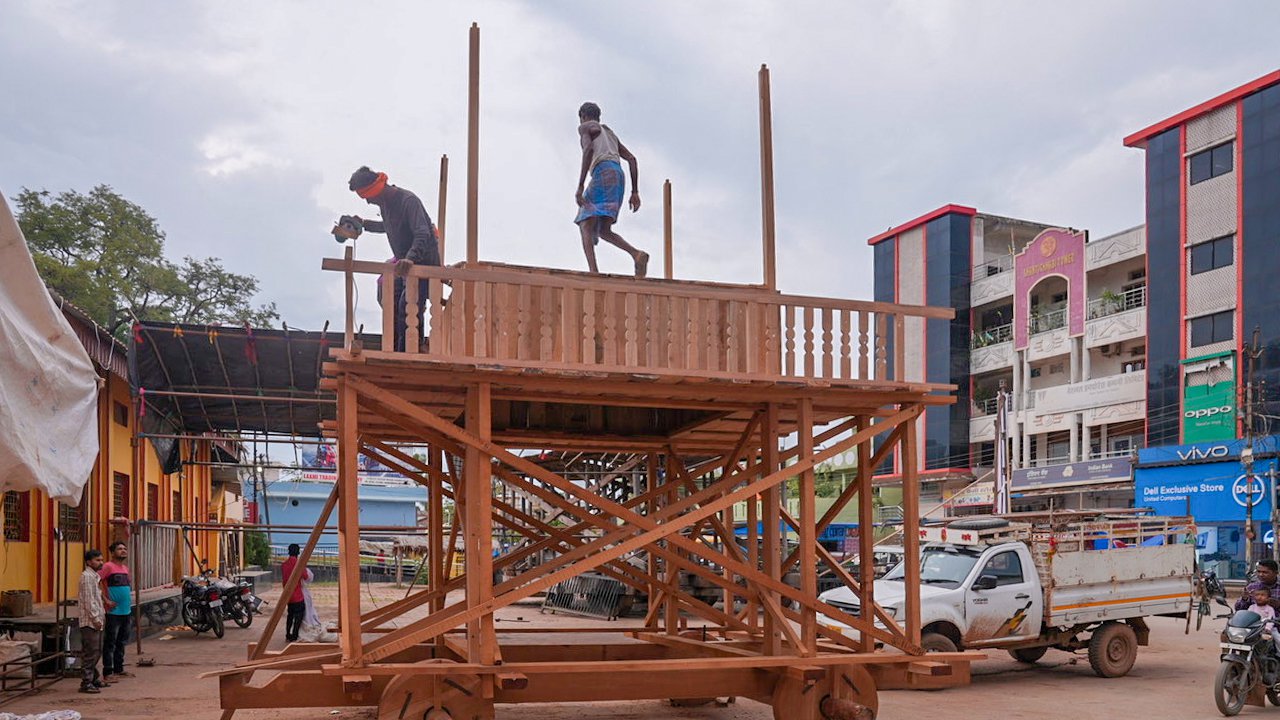
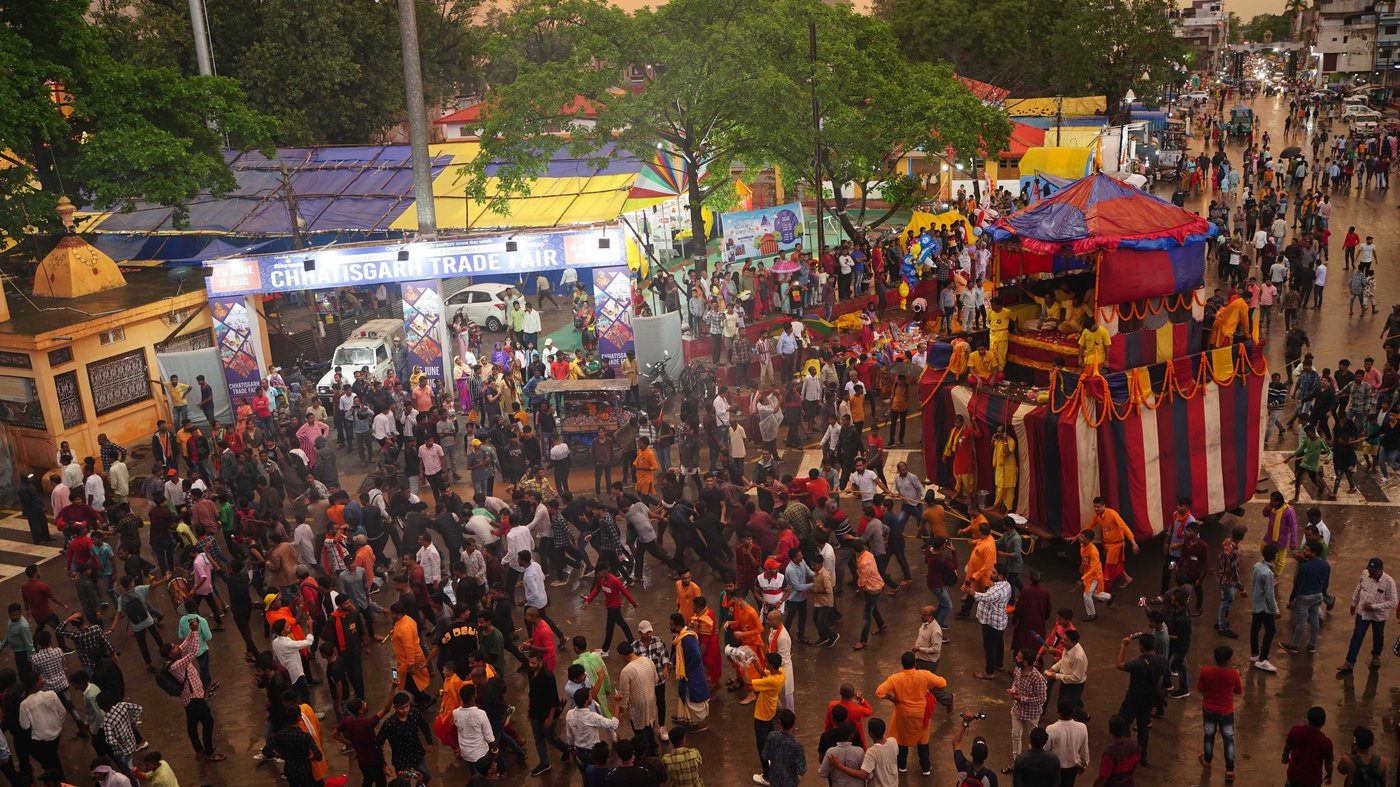
Left: Craftsmen working on building a new rath (chariot) in Jagdalpur town. Raths are made using sal and teak wood. Right: As the rath nears Shirasar Bhavan in Jagdalpur, devotees rush towards it
The Goncha festival has its roots in a story around Lord Jagannath. A Bastar king of the Chalukya dynasty, Purushottam Dev, went to Puri to offer gold and silver to Lord Jagannath. Pleased with the offerings, Purushottam was gifted a 16-wheeled
rath
(chariot) by the priests of the Jagannath temple, as directed by the king of Puri.
Later, the giant chariot made of sal and teak, was split up and four wheels were offered to Lord Jagganath in Bastar. That is the origin of the rath yatra also known as the Goncha festival in Bastar. (The remaining 12-wheeled chariot was offered to Mata Danteshwari.)
It was Purushottam Dev who saw a tupki and permitted it to be used at the Goncha festival. During this festival, Jagganath is offered panas kua – ripe jackfruit is called panas kua in the Halbi language. At the Goncha carnival in Jagdalpur city, an abundance of ripe jackfruit is an added attraction.